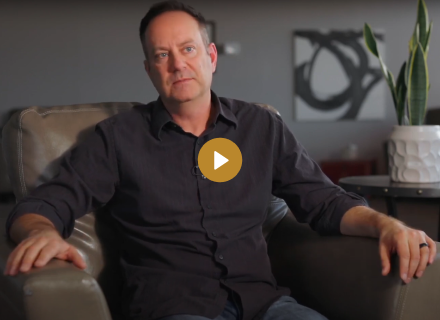Dr. Floyd Godfrey
Worry and anxiety are often used interchangeably, but they represent distinct emotional experiences. While both can be uncomfortable and mentally taxing, they differ in intensity, duration, and the ways they affect everyday life. Understanding these differences can be particularly helpful for mental health professionals when addressing concerns related to anxiety disorders, panic disorders, and post-traumatic stress disorder (PTSD).
Worry: A Common, Temporary Concern
Worry is a natural and often temporary response to stressful situations. It involves focused thoughts on specific problems or potential future events, such as worrying about an upcoming exam, a job interview, or financial responsibilities. Although worry can create feelings of unease, it usually remains manageable and subsides when the stressor is resolved.
Worry tends to be more cognitively based, meaning individuals spend time thinking about the issue at hand but are generally able to move forward and resume daily activities. In this sense, worry is a normal part of life and can even motivate individuals to solve problems.
Anxiety: A More Intense Emotional Response
In contrast to worry, anxiety is more pervasive and less tied to specific concerns. It is often described as a feeling of dread or apprehension that lingers, even when there is no immediate threat or identifiable cause. Anxiety disorders, such as generalized anxiety disorder (GAD) or panic disorder, can cause individuals to feel on edge for extended periods. This heightened state of arousal interferes with daily functioning, making it difficult for individuals to concentrate, relax, or sleep.
Panic disorder is one form of anxiety that can manifest through sudden and intense episodes known as panic attacks. These attacks involve overwhelming fear, accompanied by physical symptoms such as rapid heart rate, shortness of breath, dizziness, and a sense of losing control. Panic disorder differs from general anxiety in that these episodes can occur unpredictably, further intensifying the individual's fear of future attacks.
Symptoms of PTSD: Different from Active Worry
Post-traumatic stress disorder (PTSD) is another condition that presents symptoms quite different from everyday worry. PTSD develops after a person experiences or witnesses a traumatic event, such as an accident, war, natural disaster, or abuse. Unlike the specific concerns associated with worry, PTSD can cause a range of emotional, cognitive, and physical reactions that are more deeply rooted in the past than in present or future concerns.
One of the hallmark symptoms of PTSD is re-experiencing the trauma through flashbacks or nightmares. These intrusive memories can make individuals feel as though they are reliving the event, causing intense distress. Additionally, individuals with PTSD may engage in avoidance behaviors, steering clear of places, people, or activities that remind them of the trauma. This avoidance is different from worry, where individuals tend to focus on solving or controlling future events.
PTSD also involves heightened arousal, including symptoms like hypervigilance, exaggerated startle response, and difficulty sleeping. These symptoms are more persistent and disruptive than the worry that comes and goes in response to specific stressors. Furthermore, individuals with PTSD may experience emotional numbness, detachment from loved ones, and difficulty feeling positive emotions—symptoms that are not typically associated with worry.
Managing Worry, Anxiety, and PTSD
While worry can often be managed with stress-reducing techniques such as mindfulness or problem-solving strategies, anxiety disorders and PTSD require more specialized treatment. Cognitive-behavioral therapy (CBT) is commonly used to help individuals with anxiety challenge unhelpful thoughts and develop coping mechanisms. For those with panic disorder, CBT can also be effective in reducing the frequency and severity of panic attacks.
For PTSD, treatment approaches often involve trauma-focused therapies such as Eye Movement Desensitization and Reprocessing (EMDR) or prolonged exposure therapy, which help individuals process and integrate traumatic memories. Medications, such as selective serotonin reuptake inhibitors (SSRIs), may also be prescribed to manage anxiety or PTSD symptoms.
Hope for Recovery
The good news is that both anxiety disorders and PTSD are treatable. With the right combination of therapy, medication, and lifestyle changes, individuals can regain control over their emotional health. Understanding the differences between worry, anxiety, and the more complex symptoms of PTSD can empower mental health professionals to tailor treatment plans and offer the support necessary for recovery.
Floyd Godfrey PhD is a Certified Mental Health Coach and has been guiding clients since 2000. He currently speaks and provides consulting and mental health coaching across the globe. To learn more about his services, please visit his website: www.FloydGodfrey.com.



